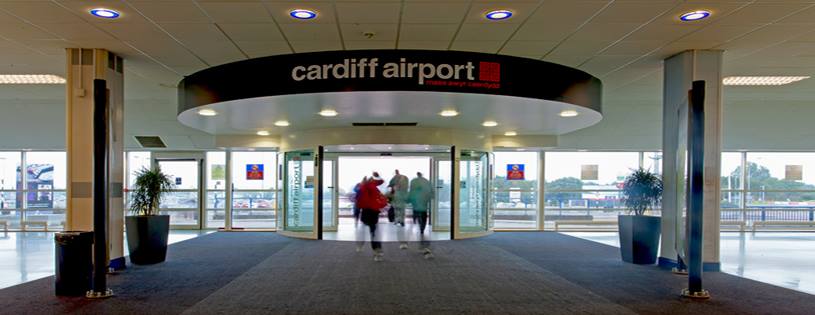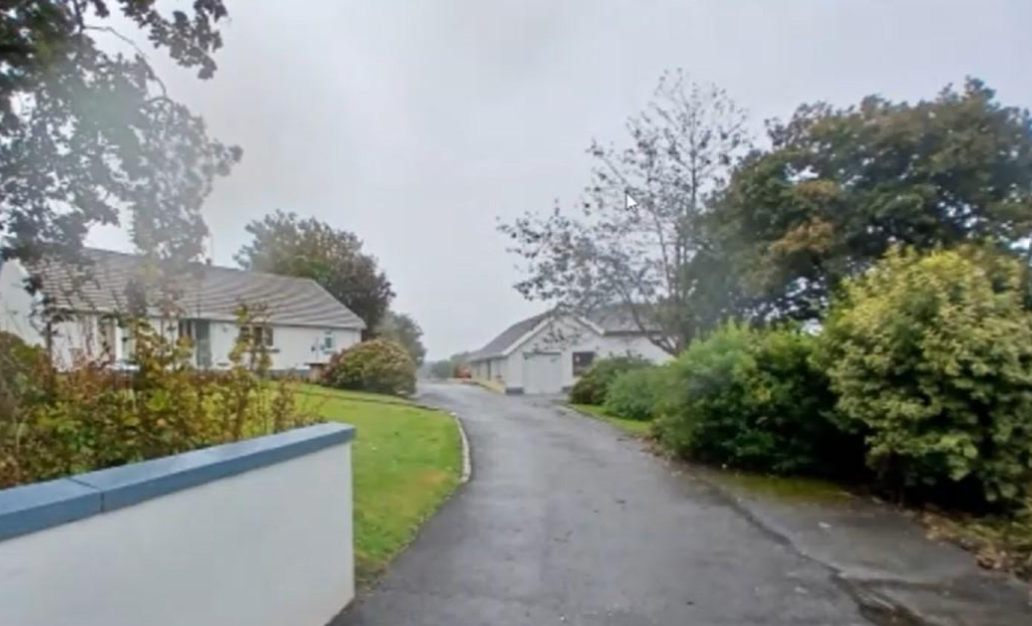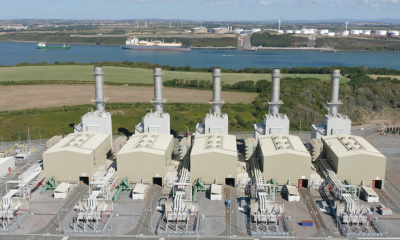Business
An experimental nuclear fusion reactor could be built in Pembrokeshire

PEMBROKESHIRE could be the location of an experimental nuclear fusion reactor, which could produce abundent clean energy, if the council backs plans for a site on land owned jointly between Valero oil refinery and Pembroke Power station.
Pembrokeshire County Council’s Cabinet will be asked next week (May 17) to support the project, which it is hoped could create limitless energy.
The officers of the council are recommending to Cabinet that members approve the nominated site being included on the list of UKAEA candidate sites.
Elsewhere in Wales, the Vale of Glamorgan Council is bidding for it to be built at the Aberthaw power station site.
Communities had until the end of March to nominate locations.
If approved the nuclear fusion station, the council’s officers say, could position Pembrokeshire at the international forefront of the clean energy revolution, bringing visibility to the community on a global stage. It was also recommended that the project will bring long-term and enduring environmental, employment, skills and economic benefits to the host community.
However, Greenpeace believes that nuclear fusion is an expensive distraction from the real agenda of providing environmentally benign, reliable energy supply. The campaign group gas also written to Parliament saying that the deuterium-tritium (D-T) fuel mixture used in nuclear fusion produces four times as many high energy neutrons per kilowatt-hour of energy produced than sandard nuclear fission.

Nevertheless the government has a concept programme called STEP, which is an ambitious programme for the conceptual design of a fusion power station. It is a UKAEA administered programme, currently with £220 million funding to produce a phase 1 concept design by 2024.
Beyond 2024, it is claimed, phase 2 intends to move into the engineering design and build phases to deliver the prototype of a commercially viable fusion plant. The prototype will hopefully demonstrate the commercial viability of fusion. The learning from this will enable the future development of a UK fleet of commercial fusion plants, the government said. The target date for the first fully operational plant will be 2040.
In November 2020, the UK Government released an open call to communities across the UK to identify sites that could accommodate a STEP power station, with the site near Valero being chosen.
A report to councillors sitting on the Cabinet states that unlike with conventional nuclear power, there is a benefit of limited risk of nuclear materials proliferation. This is because nuclear fusion doesn’t employ fissile materials like uranium and plutonium. There are no enriched materials in a fusion reactor that could be exploited to make nuclear weapons.
The STEP programme said that it seeks to maximise the recycling and re-use of materials and only use disposal routes where there is no other option.
It said to this end research is being carried out on suitable materials to minimise decay times as much as possible. Any radioactivity of the components in the tokamak structure is classed as low level and relatively short lived.
Fusion is regarded by Government as being carbon free, safe, low land use, low, manageable waste, reliable energy baseload with unlimited fuel.
Paul Miller, Cabinet Member for Economy, Tourism, Leisure and Culture on Pembrokeshire County Council said: “The Haven Waterway has provided livelihoods, underpinned by fossil fuels, for thousands of Pembrokeshire families, mine included, for more than 50 years.
“Its my job to help ensure the waterway continues to provide high skilled, engineering, science and technology jobs for the next generation of this county and so linked to our focus on climate change (and in addition to our existing multi-million pound commitments to supporting wind, wave and tidal clean power generation) my team have been exploring whether we can also support the development of clean, green fusion technology.
“It very early days in the UK Atomic Energy Authority’s site selection process but we’ll provide regular updates as things progress.”
What is nuclear fusion?
Fusion is the process that takes place in the heart of stars and provides the power that drives the universe. When light nuclei fuse to form a heavier nucleus, they release bursts of energy. This is the opposite of nuclear fission – the reaction that is used in nuclear power stations today – in which energy is released when a nucleus splits apart to form smaller nuclei.

To produce energy from fusion here on Earth, a combination of hydrogen gases – deuterium and tritium – are heated to very high temperatures (over 100 million degrees Celsius). The gas becomes a plasma and the nuclei combine to form a helium nucleus and a neutron, with a tiny fraction of the mass converted into ‘fusion’ energy. A plasma with millions of these reactions every second can provide a huge amount of energy from very small amounts of fuel.
One way to control the intensely hot plasma is to use powerful magnets. The most advanced device for this is the ‘tokamak’, a Russian word for a ring-shaped magnetic chamber. CCFE’s goal is to develop fusion reactors using the tokamak concept.
Advantages of fusion power
With increasing concerns over climate change and finite supplies of fossil fuels, we need new, better ways to meet our growing demand for energy. The benefits of fusion power make it an extremely attractive option:
- No carbon emissions. The only by-products of fusion reactions are small amounts of helium, an inert gas which can be safely released without harming the environment.
- Abundant fuels. Deuterium can be extracted from water and tritium will be produced inside the power station from lithium, an element abundant in the earth’s crust and seawater. Even with widespread adoption of fusion power stations, these fuel supplies would last for many thousands of years.
- Energy efficiency. One kilogram of fusion fuel could provide the same amount of energy as 10 million kilograms of fossil fuel. A 1 Gigawatt fusion power station will need less than one tonne of fuel during a year’s operation.
- Less radioactive waste than fission. There is no radioactive waste by-product from the fusion reaction. Only reactor components become radioactive; the level of activity depends on the structural materials used. Research is being carried out on suitable materials to minimise decay times as much as possible.
- Safety. A large-scale nuclear accident is not possible in a fusion reactor. The amounts of fuel used in fusion devices are very small (about the weight of a postage stamp at any one time). Furthermore, as the fusion process is difficult to start and keep going, there is no risk of a runaway reaction which could lead to a meltdown.
- Reliable power. Fusion power plants will be designed to produce a continuous supply of large amounts of electricity. Once established in the market, costs are predicted to be broadly similar to other energy sources.
Business
Cardiff Airport announces special Air France flights for Six Nations

Direct services to Paris-Charles de Gaulle launched to cater for Welsh supporters, French fans and couples planning a Valentine’s getaway
CARDIFF AIRPORT and Air France have unveiled a series of special direct flights between Cardiff (CWL) and Paris-Charles de Gaulle (CDG) scheduled for February 2026.
Timed to coincide with two major dates — the Wales v France Six Nations clash on Saturday 15 February and Valentine’s weekend — the flights are designed to offer supporters and holidaymakers an easy link between the two capitals.
For travelling French rugby fans, the services provide a straightforward route into Wales ahead of match day at the Principality Stadium, when Cardiff will once again be transformed by the colour, noise and passion that accompanies one of the tournament’s most eagerly awaited fixtures.

For Welsh passengers, the additional flights offer a seamless escape to Paris for Valentine’s Day, as well as opportunities for short breaks and onward travel via Air France’s wider global network.
Cardiff Airport CEO Jon Bridge said: “We’re thrilled to offer direct flights to such a vibrant and exciting city for Valentine’s weekend. Cardiff Airport is expanding its reach and giving customers fantastic travel options. We’ve listened to passenger demand and are delighted to make this opportunity possible. There is more to come from Cardiff.”
Tickets are already on sale via the Air France website and through travel agents.
Special flight schedule
Paris (CDG) → Cardiff (CWL):
- 13 February 2026: AF4148 departs 17:00 (arrives 17:30)
- 14 February 2026: AF4148 departs 14:00 (arrives 14:30)
- 15 February 2026: AF4148 departs 08:00 (arrives 08:30)
- 15 February 2026: AF4150 departs 19:40 (arrives 20:10)
- 16 February 2026: AF4148 departs 08:00 (arrives 08:30)
- 16 February 2026: AF4150 departs 16:30 (arrives 17:00)
Cardiff (CWL) → Paris (CDG):
- 13 February 2026: AF4149 departs 18:20 (arrives 20:50)
- 14 February 2026: AF4149 departs 15:20 (arrives 17:50)
- 15 February 2026: AF4149 departs 09:20 (arrives 11:50)
- 15 February 2026: AF4151 departs 21:00 (arrives 23:30)
- 16 February 2026: AF4149 departs 09:20 (arrives 11:50)
- 16 February 2026: AF4151 departs 17:50 (arrives 20:20)
Business
Cwm Deri Vineyard Martletwy holiday lets plans deferred

CALLS to convert a former vineyard restaurant in rural Pembrokeshire which had been recommended for refusal has been given a breathing space by planners.
In an application recommended for refusal at the December meeting of Pembrokeshire County Council’s planning committee, Barry Cadogan sought permission for a farm diversification and expansion of an existing holiday operation through the conversion of the redundant former Cwm Deri vineyard production base and restaurant to three holiday lets at Oaklea, Martletwy.
It was recommended for refusal on the grounds of the open countryside location being contrary to planning policy and there was no evidence submitted that the application would not increase foul flows and that nutrient neutrality in the Pembrokeshire Marine SAC would be achieved within this catchment.
An officer report said that, while the scheme was suggested as a form of farm diversification, no detail had been provided in the form of a business case.
Speaking at the meeting, agent Andrew Vaughan-Harries of Hayston Developments & Planning Ltd, after the committee had enjoyed a seasonal break for mince pies, said of the recommendation for refusal: “I’m a bit grumpy over this one; the client has done everything right, he has talked with the authority and it’s not in retrospect but has had a negative report from your officers.”

He said the former Cwm Deri vineyard had been a very successful business, with a shop and a restaurant catering for ‘100 covers’ before it closed two three years ago when the original owner relocated to Carmarthenshire.
He said Mr Cadogan then bought the site, farming over 36 acres and running a small campsite of 20 spaces, but didn’t wish to run a café or a wine shop; arguing the “beautiful kitchen” and facilities would easily convert to holiday let use.
He said a “common sense approach” showed a septic tank that could cope with a restaurant of “100 covers” could cope with three holiday lets, describing the nitrates issue as “a red herring”.
He suggested a deferral for further information to be provided by the applicant, adding: “This is a big, missed opportunity if we just kick this out today, there’s a building sitting there not creating any jobs.”
On the ‘open countryside’ argument, he said that while many viewed Martletwy as “a little bit in the sticks” there was already permission for the campsite, and the restaurant, and the Bluestone holiday park and the Wild Lakes water park were roughly a mile or so away.
He said converting the former restaurant would “be an asset to bring it over to tourism,” adding: “We don’t all want to stay in Tenby or the Ty Hotel in Milford Haven.”
While Cllr Nick Neuman felt the nutrients issue could be overcome, Cllr Michael Williams warned the application was “clearly outside policy,” recommending it be refused.
A counter-proposal, by Cllr Tony Wilcox, called for a site visit before any decision was made, the application returning to a future committee; members voting seven to three in favour of that.
Business
Welsh Govt shifts stance on business rates after pressure from S4C and Herald

Ministers release unexpected statement 48 hours after widespread concern highlighted in Welsh media
THE WELSH GOVERNMENT has announced a new package of tapered business rates relief for 2026-27, in a move that follows sustained pressure from Welsh media — including S4C Newyddion and The Pembrokeshire Herald — over the impact of revaluation on small businesses.
In Milford Haven, the hard-pressed pub sector is already feeling the impact: the annual bill for The Lord Kitchener is rising from £5,000 to £15,000, while rates at the Kimberley Public House have nearly doubled from £10,500 to £19,500. The Imperial Hall’s rates are increasing from £5,800 to £9,200, prompting director Lee Bridges to question why businesses “are being asked to pay more when we use less services”. In Haverfordwest, the annual rates bill for Eddie’s Nightclub is increasing from £57,000 to £61,500.
A written statement, issued suddenly on Wednesday afternoon, confirms that ministers will introduce a transitional “tapering mechanism” to soften steep increases for tourism, hospitality and small independent operators. Full details will be published with the draft Budget later this month.
The announcement comes less than two days after The Herald’s in-depth reporting brought forward direct concerns from Pembrokeshire business owners and councillors, highlighting the uncertainty facing one of Wales’ most important local industries.
Herald reporting credited by senior councillor

Pembrokeshire County Council Independent Group Leader Cllr Huw Carnhuan Murphy publicly thanked The Herald for pushing the issue into the spotlight.
In a statement shared on Wednesday, Cllr Murphy said: “Welcome news from Welsh Government. Thanks to Tom Sinclair for running this important item in the Herald in relation to the revaluation of businesses and the consequences it will have for many.
He added: “Newyddion S4C hefyd am redeg y stori pwysig yma ynghylch trethi busnes.,” which in English is “and thanks to S4C Newyddion as well for running this important story about business taxes.”
He added that the Independent Group “will always campaign to support our tourism and agriculture industry, on which so many residents rely within Pembrokeshire”.
Media spotlight increased pressure on Cardiff Bay
On Monday, ministers said business rates plans would be outlined “within the next two weeks”.
By Wednesday afternoon — following prominent coverage on S4C and continued pressure from The Herald — Welsh Government released an early written statement outlining new support.
Industry sources told The Herald they believed the level of public concern, amplified by the media, “forced the issue up the agenda much faster than expected”.
A cautious welcome for ‘better than nothing’
Cllr Murphy welcomed the partial support, though he stressed it fell short of what many businesses had hoped for.
“This isn’t the level of support many were hoping for,” he said, “but it is certainly much better than nothing.”
Draft Budget expected soon
The full tapered support scheme will be detailed in the Welsh Government draft Budget, expected within a fortnight.
Tourism and hospitality representatives have reserved final judgment until the figures are published, but many have expressed relief that some support will continue, following weeks of uncertainty.
-

 Crime2 days ago
Crime2 days agoDefendant denies using Sudocrem-covered finger to assault two-month-old baby
-

 Crime6 days ago
Crime6 days agoMan denies causing baby’s injuries as police interviews read to jury
-

 Crime1 day ago
Crime1 day agoPembroke rape investigation dropped – one suspect now facing deportation
-

 News1 day ago
News1 day agoBaby C trial: Mother breaks down in tears in the witness box
-

 Crime7 days ago
Crime7 days agoMan denies injuring baby as jury hears police interview in ongoing abuse trial
-

 Crime2 days ago
Crime2 days agoLifeboat crew member forced to stand down after being assaulted at Milford pub
-

 Crime2 days ago
Crime2 days agoDefendant denies causing injuries to two-month-old baby
-

 Crime2 days ago
Crime2 days agoPembrokeshire haven master admits endangering life after speedboat collision






























